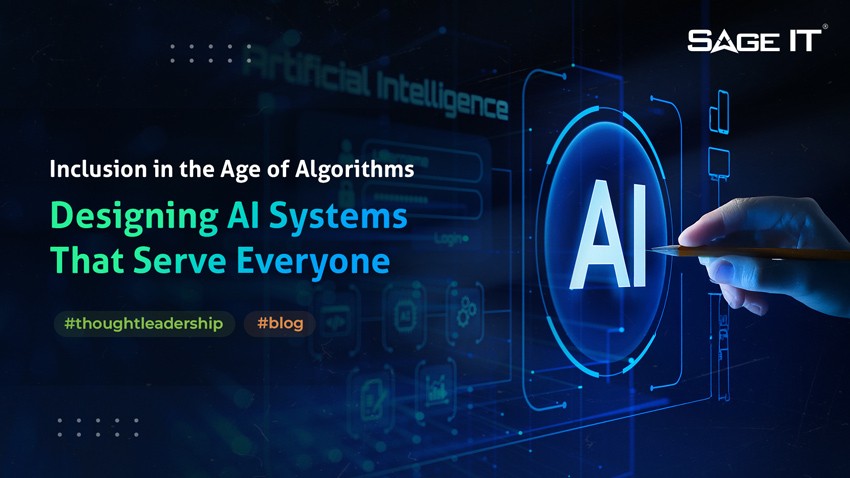“Did you know that data silos cost the average organization a staggering $12.9 million annually in lost revenue?”
As a Chief Supply Chain Officer, you know the frustrations of disconnected systems and limited visibility all too well. Global disruptions, compliance hurdles, and rising customer expectations can make your job feel impossible. Data silos are stifling your supply chain, leading to inefficiencies, missed opportunities, and mounting costs. But there’s a solution: data integration. It’s your key to achieving the seamless flow, real-time visibility, and responsiveness your supply chain needs to thrive.
The Data Problem: From Silos to Solutions
But to truly harness this power, we must address the elephant in the room: fragmented data. These isolated systems make it impossible to get a clear view, leading to major inefficiencies and staggering costs.
Look at industry leaders like Walmart. Without a unified data view, they were struggling with inaccurate demand forecasts, leading to stockouts and unhappy customers. By implementing data integration, they gained real-time visibility across their entire supply chain. This allowed them to optimize inventory levels, improve delivery times, and ultimately boost customer satisfaction.
This is just one example of how data silos cripple supply chains. Data integration is the key to breaking free from these limitations and unlocking the true potential of your operations. It’s about more than just having data – it’s about turning that data into actionable insights.
Harnessing Data for Decisions Across the Board
Data integration isn’t just about fancy dashboards – it’s about empowering every member of your supply chain. Consider this: procurement instantly reacts to a supplier delay, finding alternatives to keep production on track. The logistics team anticipates bottlenecks weeks in advance, rerouting goods for on-time delivery. Even the loading dock crew works smarter, optimizing order fulfillment based on real-time inventory data. This shared data foundation leads to better collaboration, increased accountability, smarter cross-functional decisions, and a supply chain that operates with optimal efficiency.
Take Amazon for example. By integrating data across their vast network, they’ve achieved incredible efficiency. Their system can predict what a customer will order before they even click “buy,” ensuring they always have the right stock on hand. This not only reduces the risk of stockouts but allows for super-fast fulfillment times, keeping their customers happy and coming back for more.
Shifting from Reactive to Proactive: Leverage Your Data’s Power
An integrated supply chain empowers you to move beyond firefighting and toward proactive decision-making. This is where predictive analytics enters the picture. Imagine having a crystal ball that forecasts demand, anticipates disruptions, and helps you optimize resources before problems even arise.
That crystal ball exists – it’s the power of predictive analytics unleashed upon your integrated data. AI, the same kind that powers Amazon’s warehouses, can comb through your data to predict what customers will want weeks ahead. Forget those nasty “out-of-stock” situations. AI can also help find the perfect balance between costs, delivery times, and keeping your customers happy.
Expanding Your Vision for End-to-End Visibility and Control
But remember, even the smartest crystal ball can only see so far. True supply chain mastery means extending your vision outward. Today’s supply chains aren’t confined to your own office walls – it’s a massive ecosystem involving suppliers, shipping companies, warehouses, customers… you name it!
The magic of true end-to-end integration is getting all these players on the same page, sharing data seamlessly, and moving in sync.
Take Nike, for example. They implemented an end-to-end data integration platform that linked their network of suppliers, factories, and retailers. This gave them unprecedented visibility into inventory levels, production schedules, and real-time demand signals. The impact was game-changing:
- Real-time alerts about potential disruptions allowed them to proactively mitigate delays
- Automatic adjustments to production schedules based on demand forecasts reduced waste and optimized inventory.
To get the whole ecosystem playing nice, everyone needs to agree on how they’ll share info. Think of it like a universal language for supply chain data. This cuts down on confusion, errors, and lets you get down to business!
The Power of Cloud-Based Integration
Implementing this type of seamless data sharing doesn’t have to be an IT nightmare. Cloud-based platforms have revolutionized the way companies connect their supply chains. These platforms act as a central hub, ensuring data flows smoothly and securely, regardless of where it originates. The best part? You can often get everything operational far quicker and more cost-effectively compared to traditional on-premises systems.
Security and Trust: The Foundation of Connected Supply Chains
With the power of seamless integration comes an equal responsibility to safeguard your data. With your entire supply chain connected, protecting sensitive information becomes paramount. Strict data governance policies, robust encryption, and continuous monitoring are essential. It’s about more than just preventing breaches – it’s about building trust across your entire ecosystem and ensuring partners feel confident sharing their information.
Charting the Path to Successful Integration: Overcoming Challenges and Finding Solutions
While the potential rewards of data integration are vast, the journey often reveals hidden snags – outdated systems, inconsistent data, and those who prefer the familiar over the cutting-edge. Addressing these challenges head-on is crucial for successful implementation. Let’s explore into the key steps for navigating these roadblocks and achieving a seamless integration:
1. Conduct a Comprehensive Assessment
Don’t rush in blindly. Map out all your existing systems – warts and all! – and pinpoint exactly where your data resides. Also, get a clear picture of your suppliers, shipping partners… everyone involved in your extended supply chain.
2. Define a Clear Data Integration Strategy
Based on your assessment, envision your ideal future state. Which systems need to integrate? What kind of insights should be readily available to your team? What are your company’s most important goals? Document it all.
3. Dealing with Legacy Systems
Those clunky old systems your company has relied on for ages? They might need a bit of an upgrade. The good news is, there are clever tools that can act like translators, getting those old systems to communicate with the new ones. In some cases, it might even make sense to gradually replace those ancient systems over time to future-proof your operations entirely.
4. Ensuring Data Quality and Consistency
Garbage in, garbage out – it’s a classic saying, and it rings especially true in supply chains. Before going live, conduct a thorough audit of your data. Double-check for errors, fill in missing information, and make sure everyone uses consistent terms and formats. Think of it as preventing shipment mix-ups before they even happen. It’s an investment with significant returns.
5. Invest in Scalable Integration Technologies
A plethora of powerful tools exist to help you connect the dots. Cloud platforms and data-sharing solutions abound – choose those that align with your needs and can scale alongside your company’s growth.
6. Establish Robust Data Governance and Security Frameworks
From the outset, implement strict rules surrounding your data. Determine access permissions, storage methods, and protection measures – these are foundational, not an afterthought.
7. Foster a Culture of Continuous Improvement
This isn’t a one-time fix – it’s about transforming how your company views data. Keep everyone informed, celebrate data-driven successes, and always seek new avenues for improvement.
8. Cultivating a Data-Driven Culture
Even the most advanced tech needs people to drive true transformation. Get your team excited about how data can simplify their jobs and empower better decision-making. Training, success stories, and recognizing data champions will go a long way. It’s about changing mindsets, not just deploying software.
9. Leverage Strategic Partnerships and Ecosystem Collaboration
Work closely with industry groups and experts to establish data-sharing standards and best practices. When the entire supply chain industry operates more intelligently, everyone benefits.
Conclusion: The Future of Supply Chains is Integrated
Achieving a fully integrated and harmonious supply chain takes time and effort. It requires strategic investment in time, resources, and a commitment to change. But the rewards for those who embrace this shift are transformative. Experience a leaner, faster, and more resilient supply chain that can withstand any market disruption.
Don’t be fooled by buzzwords or empty promises. Data integration is about better decisions, happier customers, and significant cost savings. The companies already reaping these benefits aren’t looking back, and neither should you.
The era of siloed data and chaotic guesswork is fading. The future belongs to supply chains that are data-driven, agile, and ready for anything. Are you ready to join the revolution?











